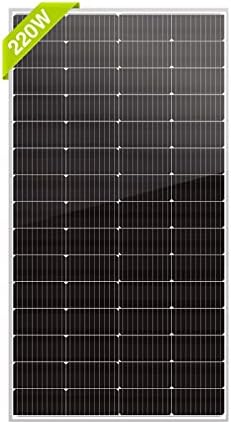Solar Panels: The Key to Energy Independence and Lower Electricity Bills
In today’s ever-changing world, finding ways to live more sustainably and lower our expenses has become increasingly important. As someone who has spent years living off the grid, I can attest to the many benefits of using solar panels to generate energy. Not only do solar panels provide a reliable source of power, but they also offer the potential for energy independence and lower electricity bills. In this article, we will explore the advantages of installing solar panels, the process of transitioning to renewable energy, and how this investment can pay off in the long run.
Advantages of Solar Panels
The use of solar panels has grown significantly in recent years, and for good reason. There are numerous advantages to using solar energy, making it an attractive option for those looking to lower their carbon footprint and decrease their reliance on traditional energy sources. One of the most significant benefits of solar panels is the potential for energy independence. By generating your own energy through solar power, you can reduce or even eliminate your reliance on the electrical grid. This means that you won’t have to worry about power outages or fluctuations in energy prices, providing you with greater control over your electricity supply.
Additionally, solar panels can lead to substantial cost savings over time. While the initial investment in solar panels may seem daunting, the long-term financial benefits are undeniable. By generating your own electricity, you can significantly reduce or even eliminate your monthly electricity bills. In some cases, you may even produce more energy than you consume, allowing you to sell excess power back to the grid and further offset your costs. With the rising price of traditional energy sources, investing in solar panels can provide significant relief from escalating electricity bills.
Transitioning to Renewable Energy
Transitioning to renewable energy through the installation of solar panels is a relatively straightforward process, though it does require careful consideration and planning. The first step is to assess the energy needs of your home or property and determine the size and capacity of the solar panel system required to meet those needs. This may involve consulting with a solar energy professional to ensure that the system is properly designed and configured for maximum efficiency.
Once the system has been designed, the next step is to have the solar panels installed on your property. This typically involves mounting the panels on your roof or in an open area that receives ample sunlight throughout the day. The panels are then connected to an inverter, which converts the direct current (DC) electricity generated by the panels into alternating current (AC) electricity that can be used to power your home.
Pro Tips:
– When choosing solar panels, opt for high-quality, durable panels that are backed by a strong warranty. While the upfront cost may be higher, the long-term benefits will outweigh the initial investment.
– Before proceeding with the installation of solar panels, it’s important to conduct a thorough assessment of your property to ensure that it is suitable for solar energy generation. Factors such as the orientation of your roof, shading, and structural integrity should be carefully considered.
In Conclusion:
With the numerous advantages of solar panels, including the potential for energy independence and lower electricity bills, it’s no wonder that more and more people are turning to renewable energy. By investing in solar panels, you can take control of your energy supply, reduce your environmental impact, and save money in the long run. With careful planning and the right professional assistance, transitioning to solar energy can be a smooth and rewarding process. If you’re considering making the switch to solar power, now is the time to take the first step towards a more sustainable and cost-effective energy solution.



